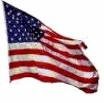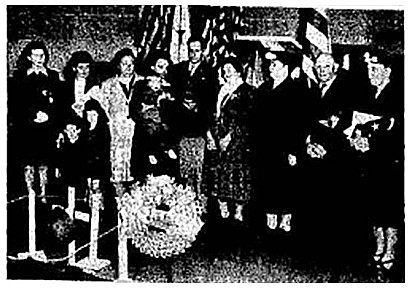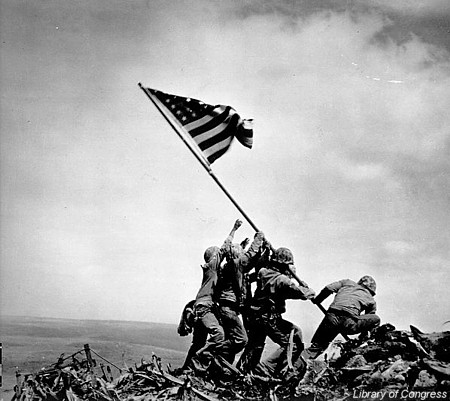


Cerro Gordo County Iowa
Part of the IaGenWeb Project
|


The Globe Gazette
At Memorial Service
 Pictured here are the next of kin of servicemen honored at the 9th joint public memorial service held at Music hall Sunday afternoon. They were present to receive the U. S. burial flags and Gold Star citation scrolls presented by the American Legion and the Veterans of Foreign Wars. The Rev. Paul Peterson of the Wesley Methodist church gave the eulogy. Lt. Col. Arthur T. Lobdell of the 7th service command was in attendance to present the bronze star medal to Mrs. John J. Vician, a posthumous award for her husband, Capt. Vician. Left to right are: Mrs. Viola Cox, wife of Warren H. Cox; Mrs. Frances Amos, wife of J. B. Amos, with children John and Judy; Miss Marjorie Horrman, sister of Richard Horrman; Mrs. Vician and Judy; Lt. Col. Arthur T. Lobdell; Mrs. Elizabeth Polacek, mother of Capt. Vician; Mrs. August Horrman and Mr. Horrman, parents of Richard; and Mrs. Gilbert, mother of Nolan M. Gilbert. Not pictured, but present to receive the flag was Mrs. Madeline Bracklein, mother of William C. Bracklein. Mr. Peterson centered his talk around 2 lines of verse from Emerson: When for the truth he ought to die.” “I didn’t know any of these 5 boys personally,” said Mr. Peterson, “but I venture that 2 things dominated them: They didn’t want safety, and for the truth of a world democracy they were willing ‘to give’ their lives. Three things made them heroes: They didn’t play safe; they died for a cause; and they have their immortality . . . that which motivated their lives, lives on.” Councilman Adrian Hart, in the absence of Mayor Howard E. Bruce, who was unable to be present, read a letter of condolence from the city. It said in part: “It is only fitting that we this day dedicate our lives to comforting and aiding their loved ones, and strive to the utmost to establish a lasting peace – for the future generations – this a tribute to our departed members.” Mrs. Carl H. Carlson played “Largo” by Handel at the opening of the program. Mrs. Peterson sang “Prayer” by Guion and “There Is No Death” by O’Hara, with Mrs. Carlson accompanying. The honor guard at the soldier’s shrine and the firing squad were from Company E of the state guard under the command of Capt. Leslie R. Whipple, Participating were 2nd Lt. George C. Mathews, T/Sgt. Dale E. Hyde, T/Sgt. William Cooper, S/Sgt. Carol Schultz, Sgt. Ralph D. Rowley, Cpl. Resser Adams, T/5 Terold T. Tilton, Pfc. Robert Patton, Pvt. Constantine Kregotis and Pvt. J. H. Niederheiser. Bill Nicholas played taps. The program was under the direction of the American Legion and the V. F. W. with Nick Degen, commander of the V. F. W., presiding. All patriotic organizations participated with their colors. (Lock photo, Kayenay engraving.)
The Globe Gazette
He was only a child when Marine Corps Sgt. Joe [Joseph Burton] AMOS died in [Wednesday, March 07] 1945 - among the thousands of U.S. soldiers to fall during the battle of Iwo Jima. "I have no recollection of my father," said the now 61-year-old John AMOS of Clear Lake. "Though I always honored him as a hero, I was an adult before it really hit - the realization of his sacrifice." Joe AMOS and his wife, Frances, were busy raising a young daughter and son and running their Jack Sprat Grocery in Clarion when war broke out. AMOS sold the store and enlisted in the [26th] Marines in November 1943. Fifteen months later, on Feb. 19, 1945, AMOS was among the first wave of Marines to land on Iwo Jima. That's where he died, and was buried in the shadow of Mount Suribachi. Today his son cherishes the medals - Purple Heart, Silver Star, Bronze Star - that testify to AMOS' courage. There are also a few letters the young soldier penned home to his wife. In a letter written March 1, 1945, just six days before he died, AMOS described himself as "plenty thankful to be alive," adding that a Japanese sniper bullet had ripped the canteen off his cartridge belt. Research by World War II historian and District Court Judge Newt DRAHEIM confirmed that Sgt. Joe AMOS was a squad leader for the Marines who would later climb Mount Suribachi on Feb. 23, 1945, raising the Stars and Stripes on a steel pole. For DRAHEIM, this particular story was not only a tribute to a brave soldier, it was personal. The judge grew up in Clarion and knew AMOS.
After AMOS was killed, Secretary of the Navy James FORRETAL wrote to the family, describing him as a leader who fearlessly exposed himself to enemy gunfire, fought ferociously in hand-to-hand combat and courageously led his men up the enemy flank until he was fatally wounded. Amos died March 7, 1945, at age 31. He was buried in the 5th Marine Division Cemetery on Iwo Jima, and his body was later moved to a military cemetery in Hawaii known as the Punchbowl [Honolulu Memorial Cemetery, Plot M; Grave 6]. John AMOS has never stood beside his father's grave, and cannot remember his father's face. But John AMOS understands as few can that freedom is not free.


Sgt. Michael "Mike" STRANK was born in Jarabenia, Czechoslovakia in 1919. He was the oldest of the flag raisers. Sgt. STRANK was hit by a mortar as he was diagramming an plan in the sand for his 'boys' on March 1, 1945. He was buried in Arlington National Cemetery. Cpl. Harlon Henry BLOCK, second-in-command to Sgt. STRANK, was born in Yorktown, Texas on November 6th, 1924. He assumed leadership of the unit after Sgt. STRANK'S death and killed later that same day by a mortar blast on March 1, 1945, Iwo Jima. He was 21-years-old. Harlon is buried beside the Iwo Jima Monument, Harlingen, Texas. On February 25th when Harlon's mother Belle saw the Flag Raising photograph in the Weslaco newspaper, she declared, "That's Harlon!" The government had mis-identified the soldier as Harry HANSEN from Boston. Belle never wavered, insisting the she 'knew her boy.' Eighteen months later, in a sensational front-page story, a Congressional investigation revealed that Belle did indeed 'know her boy.' Pvt. Franklin Runyon SOUSLEY was born in Hilltop, Kentucky on September 19, 1925. He enlisted at the age of 17 and sailed for the Pacific on his 18th birthday. He was the last flag-raiser to die on Iwo Jima on March 21st, killed by a Japanese sniper's bullet. Shot in the back, Franklin was at first annoyed, then collapsed. When asked how he was doing, his reply was "Not bad, I don't feel anything." He died seconds later at the age of 19. When his mother heard of his death, "You could hear her screaming clear across the fields at the neighbor's farm." Franklin was initially buried in the Iwo Jima American Cemetery. He was reinterred at Elizaville Cemetery in Ketucky on May 8, 1947 at the request of his family. Pvt. Ira Hamilton Hayes, a Pima Indian, was born on the Gila River reservation at Sacaton, Arizona on January 12, 1923. His quiet and steady demeanor was admired by his fellow Marines who fought beside him through three Pacific battles. After the flag raising, Ira couldn't understand or accept the public adulation, stating, "How could I feel like a hero when only five men in my platoon of 45 survived, when only 27 men in my company of 250 managed to escape death or injury?" The subsequent Bond Tour was torture for him. Unable to return to an anonymous life on the reservation, he attempted to drown his pain and suffering with alcohol. Ira died after a night of drinking at Bapchule, Arizona on January 24, 1955. As he drank his last bottle of whiskey, he was crying and mumbling about his "good buddies." Ira was 32. He was buried at Arlington National Cemetery. Ira was portrayed by actor Tony Curtis in the 1961 movie "The Outsider", and by actor Adam Beach in the 2006 movie "Flags of Our Fathers." Pvt. Rene A. GAGNON was born on March 7, 1925, Manchester, New Hampshire. He was the youngest survivor and the soldier who carried the flag up Mt. Suribachi. Of the original 310 men in E Company, Rene was the one of only 50 men to survived the battle without being wounded or killed. He was the first survivor to arrive back home in the United States. He died in Manchester, New Hampshire on October 12, 1979 of a heart attack at the age of 54 years. Rene was buried at Arlington National Cemetery, the Flag Raiser who was interred the closest to the Marine Corps Memorial. Corpsman (Pharmacist's Mate 2C) John Henry "Doc" BRADLEY was born in Antigo, Wisconsin on July 10, 1923. He was a Navy Corpsman who "jumped in to lend a hand." On the second day of the invasion, BRADLEY was pinned down with his unit under heavy fire when a Marine was cut down by crisscrossing Japanese machine guns and mortar fire. Braving intense enemy fire, BRADLEY ran thirty yards over bare ground to reach the downed Marine, inserted plasma to save his life, then covered the wounded man with his own body to protect him from enemy fire while plasma dripped into the downed man's veins. When the plasma bottle had emptied, BRADLY carried the wounded soldier back to safety. For this he was awarded the Navy Cross for heroism. On March 12th, BRADLEY was hit by Japanese shell fire while offering aide to wounded Marines. When he got one wounded soldier to the aid station, the doctors noticed BRADLEY'S own severely wounded legs. Despite his protest to remain with the unit, BRADLEY was immediately air evacuated to Guam and then on to Hawaii. The war was over for him. Of the surviving Flag Raisers, John was the only one who succeeded in putting his life back together after the war. He gave generously of his time and money to local causes. Married for 47 years, he was the father of eight children. John died in Antigo, Wisconsin on January 11, 1994. He was interred at Queen of Peace Catholic Cemetery, Antigo, Wisconsin.
Transcriptions and additional notes (flag raisers) by Sharon R. Becker, May of 2011; updated March of 2013
|
Return to Cerro Gordo Military Index Page Return to Cerro Gordo Home Page